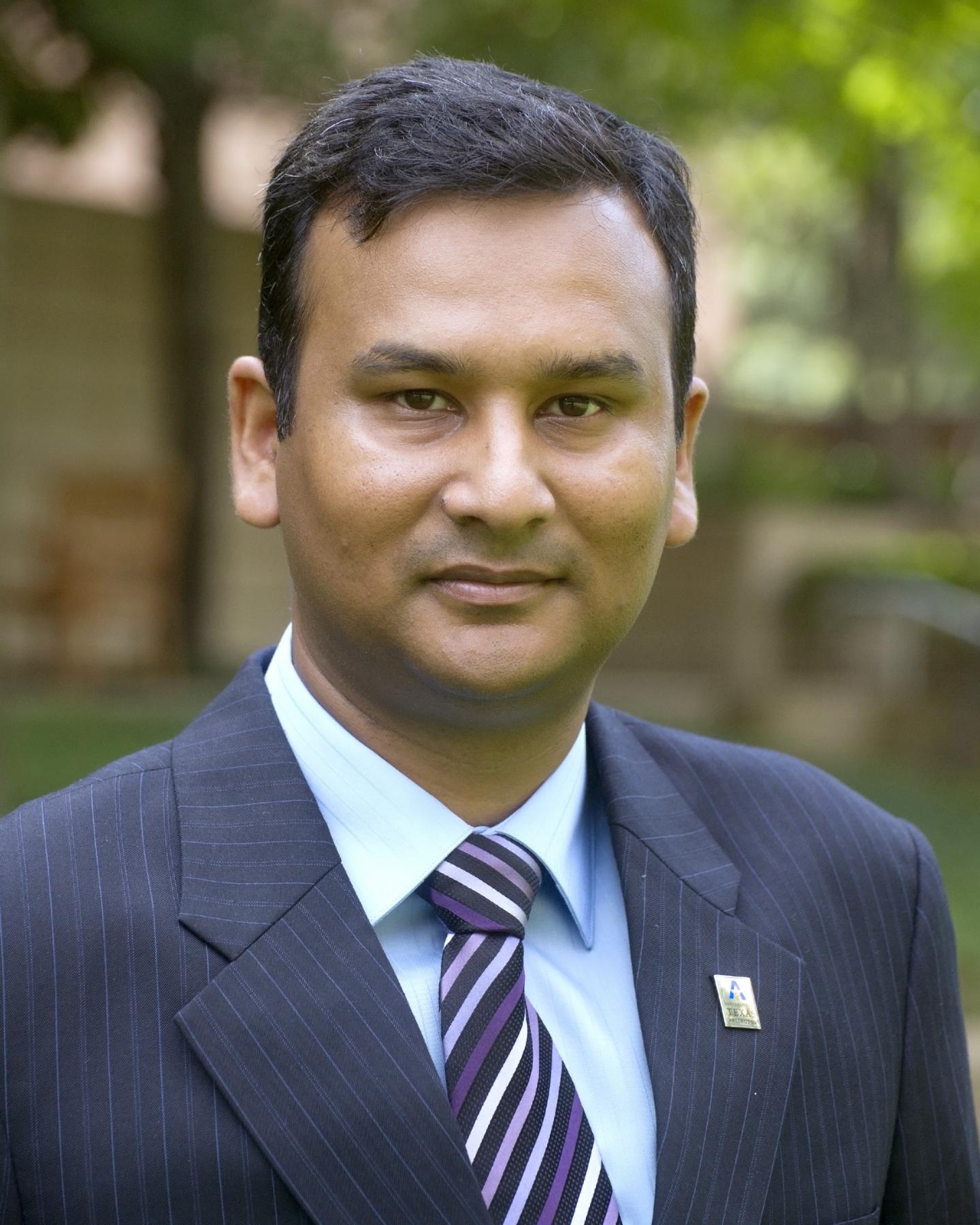Quantifying brain trauma

Credit: UT Arlington
It is often easy to tell when a person has suffered a severe traumatic brain injury, but it is much more difficult to detect and determine the amount of brain damage a person has suffered when the injury is mild.
Ashfaq Adnan, associate professor of mechanical engineering at The University of Texas at Arlington, has been awarded a $261,120 Defense University Research Instrumentation Program, or DURIP, grant to purchase equipment that determines the severity of brain injuries, even if they aren’t readily apparent. The equipment will be used to expand his recent research in damage detection for blast-related traumatic brain injuries. UTA mechanical engineering Associate Professor Kamesh Subbarao is the co-investigator on the project.
Adnan and Subbarao will use a life-size model of a head to simulate and understand the brain, which will be measured using a combined electroencephalography, or EEG, and electrocorticography, or ECoG, system. Both methods read neuronal activity in the brain, but an EEG is attached to the outside of the head and is less accurate than an ECoG, which can be placed inside the skull after brain surgery.
The new equipment will allow Adnan and Subbarao to understand further how neuronal communication in the brain can change or be disrupted due to a blast event or a concussion.
“We are studying brain damage from three different perspectives: physiological, where the damage changes the brain’s fluidic environment and functions; physical, where nerves actually break; and electrochemical, where communication across neurons is disrupted,” Adnan said. “We want to identify and quantify levels of severity for brain injuries that are often subtle or undetectable from the outside. Often it’s not clear if someone has a brain injury or not, and we hope this equipment, when integrated with our computational model, will help us more specifically determine levels of internal injury.”
Subbarao will help create and test algorithms for use with the new equipment.
“This equipment will aid me in verifying and validating algorithms my group has developed to solve inverse problems that are pervasive in many data-enabled applications. In the present case, these algorithms will help us locate specific regions of internal injury,” Subbarao said.
The research is an example of UTA’s work in health and the human condition and data-driven discovery, two themes of the University’s UTA’s Strategic Plan 2020: Bold Solutions | Global Impact, said Erian Armanios, chair of the Mechanical and Aerospace Engineering Department.
“This new device provides a non-invasive means to supply vital information about the brain health of an injured person,” Armanios said. “Dr. Adnan’s expertise in biomechanics combined with Dr. Subbarao’s in signal analysis and system identification brings cross-disciplinary synergy to address the challenges of traumatic brain injury.”
In April, Adnan chaired UTA’s first International Symposium on Traumatic Brain Injury Mechanisms and Protections, with leading researchers and experts from around the world working to identify knowledge gaps in TBI research and exchange ideas to accelerate research progress.
Adnan has two active grants from the Office of Naval Research and a National Institutes of Health sub-award totaling $885,000 to support his research related to blast-induced traumatic brain injury. He previously published research that determined that, under certain circumstances, the mechanical forces of a blast-like event could damage the perineuronal net located adjacent to the neurons, which could in turn damage of the neurons themselves.
He and his team simulated a shock wave-induced cavitation collapse within the perineuronal net, which is a specialized extracellular matrix that stabilizes synapses in the brain. The team focused on the damage in hyaluronan, which is the net’s main structural component, and showed that the localized supersonic forces created by an asymmetrical bubble collapse may break the hyaluronan. This improved current knowledge and understanding of the connection between damage to the perineuronal net and neurodegenerative disorders.
The award to Adnan and Subbarao is the second DURIP grant awarded to UTA’s Mechanical and Aerospace Engineering Department in recent months. Earlier this year, it was announced that Luca Maddalena, aerospace engineering associate professor and director of the Aerodynamics Research Center, received a $690,000 DURIP grant to purchase a femtosecond laser system, which will be the only one of its kind to be used in an arc-heated wind tunnel in the United States. A femtosecond is one quadrillionth, or one millionth of a billionth, of a second.
###
U.S. News & World Report’s 2020 “Best Graduate Schools” list ranks the College of Engineering No. 82 out of 199 programs assessed nationwide. All of the programs in the College of Engineering are ranked among the top 100 in the nation, with the aerospace engineering program ranked among the top 45.
— written by Jeremy Agor
Media Contact
Herb Booth
[email protected]
Original Source
https:/



